Supreme Court Clarifies Enablement Standard, Finds Amgen’s Antibody Genus Claims Invalid
May 22, 2023
By: Deirdre E. Sanders and Bin Wang, Ph.D.
- Functionally-defined antibody genus patent claims were held not to be sufficiently enabled by disclosure of amino acid sequences of 26 example antibodies.
- Examples may enable broad claims if coupled with disclosure of a consistent characteristic among the examples, which provides fitness for the recited purpose.
The Supreme Court of the United States has issued its ruling in Amgen v. Sanofi, affirming the Federal Circuit’s conclusion that Amgen failed “to enable any person skilled in the art . . . to make and use the [invention]” as recited by the relevant claims in two 2014 patents: U.S. Patent No. 8,829,165 (the ’165 patent) and U.S. Patent No. 8,859,741 (the ’741 patent).
Amgen and Sanofi market low-density lipoprotein (LDL) cholesterol-lowering antibody drugs. Amgen markets Repatha® (evolocumab), and Sanofi markets Praluent® (alirocumab). Amgen sued Sanofi for infringement of certain claims of the ’165 patent and the ’741 patent. In response, Sanofi asserted that the claims were invalid for lack of enablement. The District Court and The Federal Circuit agreed that the claims were not enabled, and Amgen appealed.
In a unanimous decision delivered by Justice Gorsuch, the Supreme Court agreed with Sanofi and the lower courts’ findings that Amgen’s patents failed to meet the enablement requirement. The Court found that Amgen sought to claim the use of potentially millions more antibodies than the patents had taught persons skilled in the art to make.
The relevant claims recite an isolated monoclonal antibody that (i) binds to one or two epitope residues of a protein called PCSK9, and (ii) blocks binding of PCSK9 to a low-density lipoprotein receptor (LDLR). These claims do not recite any amino acid sequence of the monoclonal antibody. PCSK9 is an inhibitor of low-density lipoprotein receptor (LDLR) degradation.
Amgen’s specifications (which are substantially the same) provide the amino acid sequences of 26 example antibodies performing the claimed functions. Amgen asserted that its claims were enabled because scientists can make and use every undisclosed but functional antibody if they follow the company’s “roadmap” or its proposal for “conservative substitution.” The Court disagreed, stating that those approaches amount to little more than two research assignments. Specifically, the Court said that the first approach was a trial-and-error method for finding functional antibodies, and the second approach was tantamount to a “hunting license,” requiring scientists to make substitutions to the amino acid sequences of antibodies known to work and then test the resulting antibodies to see if they do as well.
The Court concluded that Amgen sought to claim “sovereignty over [an] entire kingdom” of antibodies, and held that “Amgen has failed to enable all that it has claimed, even allowing for a reasonable degree of experimentation.”
The Court noted, however, that it may suffice to give an example (or a few examples) if the specification also discloses “some general quality . . . running through” the class that gives it “a peculiar fitness for the particular purpose,” citing previous case law regarding enablement.
Further, the Court confirmed that a specification is not necessarily inadequate just because it leaves the skilled artisan to engage in some measure of adaptation or testing.
The Court’s ruling provides guidance for those attempting to obtain broad functional genus patents, which are particularly common in the pharmaceutical, chemical, and biotech fields. With regard to antibodies, the Court stated that, despite recent advances, aspects of antibody science “remain unpredictable,” citing challenges of accurate prediction of three-dimensional antibody structure. However, there are strategies to increase the likelihood of obtaining claims with reasonable breadth.
The decision underlines the value of patent practitioners probing inventors for common aspects among examples and potential embodiments to disclose in patent applications. Doing so will help to ensure that the enablement requirement is met across the breadth of the claims. Further, it is helpful to identify common features among the examples, particularly those common features with a nexus to their disclosed functions.
In the context of antibody applications, disclosing multiple example antibodies (particularly when coupled with structural function analysis) may enable a patentee to obtain broader claim scope. Disclosure of consensus sequences may also be helpful.Further, practitioners should use strategic claiming strategies to pursue claims with varying scope and structural elements. For example, practitioners should consider claiming antibodies using various structural elements associated with function, such as sequences defining paratopes, complementarity-determining regions (CDRs), variable regions, and heavy and light chain sequences.





